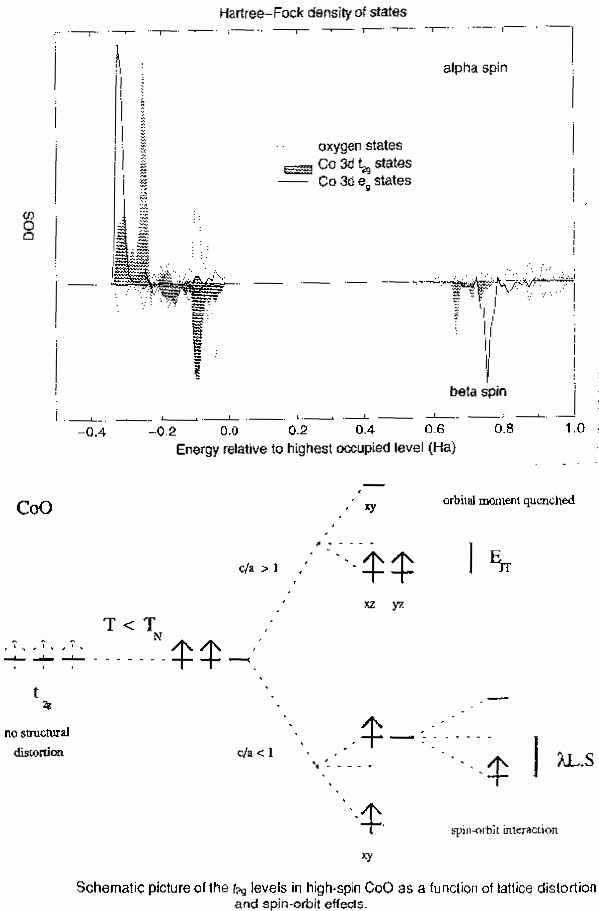23. CoO |



|
A very quick 30 seconds on cobalt oxide. CoO is supposed to be a problem because of orbital degeneracy. We can illustrate this with the following energy level diagram:  So there is an orbital degeneracy here, and applying the same Mott-Hubbard style considerations as we did with NiO earlier we expect one of the atomic-like t2g states to go and live up in the conduction band. Now in real life this degeneracy will be broken by spin orbit coupling, which isn't accounted for in the program I'm using. If you just run this calculation with an undistorted unit cell then the SCF program may get confused, because it can't decide where the Fermi level is. But if you just cheat slightly it works; at the start of the self-consistency cycle, you just need to tap the energy of one of these states slightly (add a constant to one of the eigenvalues and then take it away again) to break the degeneracy. Everything then sorts itself out. Provided you make the unit cell large enough (8 CoO units) you see a spontaneous orbital ordering, much smaller and less obvious than in KCuF3. As you can see from the density of states (which is calculated for an orbitally ordered but undistorted crystal), some of the t2g weight is transferred into the conduction band, as we expect. The orbital ordering is different from KCuF3, where the symmetry of the ordering produces a locally asymmetric Jahn-Teller distortion which moves the fluorine ions off the centre of the Cu-F-Cu bond. In CoO, the force on the oxygen ion is symmetric, and instead the crystal is unstable with respect to a tetragonal distortion of the whole unit cell (lengthening one of the axes of the cube). Recall the table I showed you right at the start of this talk - the one which showed the different types and symmetries of distortions in the 3d monoxides. In NiO and MnO there was a rhombohedral distortion due to simple magnetostriction arising from the AF2 antiferromagnetic spin arrangement. In CoO the tetragonal distortion arises from a quite different process - the competing forces are illustrated in the second diagram above. |


